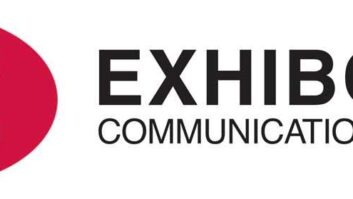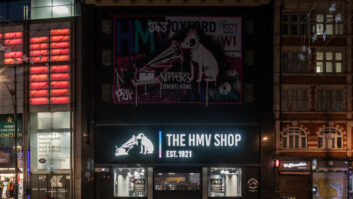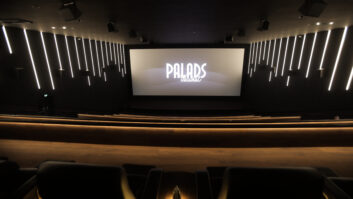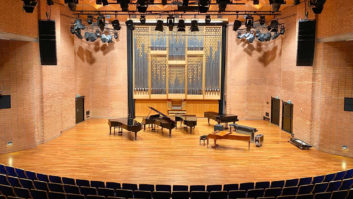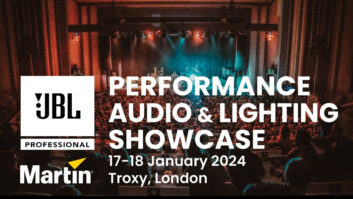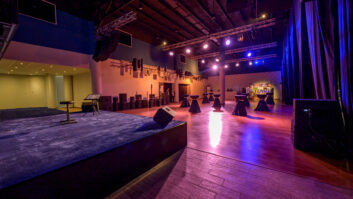JBL Professional, a Harman brand, provided the complex arrays of audio for the Comic-Con International show, at the San Diego Convention Center, in California, which attracted over 135,000 attendees to celebrate all things to do with comics and popular arts, from feature films to video games and most of all, comic books. The event, which took place from July 24 to August 7, draws crowds that often wait in line overnight for entry to presentations featuring high-profile actors, directors, and other celebrities.
Hall H garner the widest attention as upwards of 6,000 fans pack in to see panel discussions, cast members and screenings. But Hall H demands two types of audio – for spoken word, such as interviews and commentary, which requires high intelligibility mono sound evenly covering the room. Second, there are soundtracks, which require dynamic and immersive multichannel delivery.

San Diego’s Show Imaging provided the audio and opted to use JBL Professional arrays. The LCR cinema system is three arrays of 10 JBL VTX A12 Dual 12-inch Line Array Loudspeakers. Surround content plays through 12 arrays of five VTX A6 Sub-compact Dual 6.5-Inch Line Array. LFE signals play though a dozen VTX B28 Arrayable Dual-18-inch Subwoofers on either side of the stage, plus a centre array of eight B18 Arrayable Single 18-inch Subwoofers.
The surround speakers, hung above the video walls running down each side of the hall, are suspended from custom trusses designed and built by Show Imaging’s custom fabrication department.
The basic corporate system is two arrays of 11 VTX A8 Dual 8-inch Compact Line Array loudspeakers, plus a flown centre fill of two arrays with six A8 cabinets. Four delay arrays of six A12 cabinets plus two VTX A12W (wide coverage angle) cabinets on the bottom fly between supplemental video screens for the rear of the room. An array of six A8 cabinets covers the very furthest reach of the room. The SRX712M 12-inch Two-Way Stage Monitors are used onstage.
Elliot Carroll, director of audio services, Show Imaging, said: “A major challenge of this event is that you have to have a cinema system with a traditional LCR behind the perforated screen for playback, but then you have to deal with panelists and people talking on stage in front of the screen, which obviously you can’t put in the cinema system without causing feedback, so there’s a cinema system and then a separate corporate system, with speakers that are outside of the screen.”
The situation becomes even more challenging with the need to integrate these separate systems in order to deliver proper coverage to the room.
Carroll explained: “The room’s so big you need to use delay speakers, so you have to mix the cinema and corporate systems together for the people hearing the delay speakers and this gets further complicated by having six sets of surround speakers on each side, which we’ve added in recent years. You end up trying to mix it all in, knowing you’re not in a nice, compact movie theatre where everyone can hear every speaker.”
Hall H is far more capacious than any movie theatre and also asymmetrical. A seat in the middle or rear of the room might be receiving a delayed signal from the corporate system mixed with delayed LCR signals from the cinema system, plus signals from surround speakers. Such a multi-dimensional problem can only be tackled using powerful and highly flexible tools, says Carroll.
He said: “The game changer this year was JBL’s Venue Synthesis software. The key thing with Venue Synthesis is being able to see the coverage of everything in a 3D space, because you can see what the system is doing as a whole. When we’re tuning, we’re just confirming what we already think is going to happen because we can see it in the software.”
He continued: “It takes out some of the guesswork and shortens the tuning time. Having Hall H drawn up in Venue Synthesis was helpful to us dialing in the new delay hangs and the surrounds much, much faster than we were able to do in the past. That was huge because it gained us time back onsite.”
Actual implementation of the delays is done with a delay matrix that allows each feed to be appropriately delayed before signals are combined and distributed. “When it’s timed right and tuned right, the match between the cinema and corporate systems in sound quality, imaging, and level at a given seat is exceptional,” he concluded.

